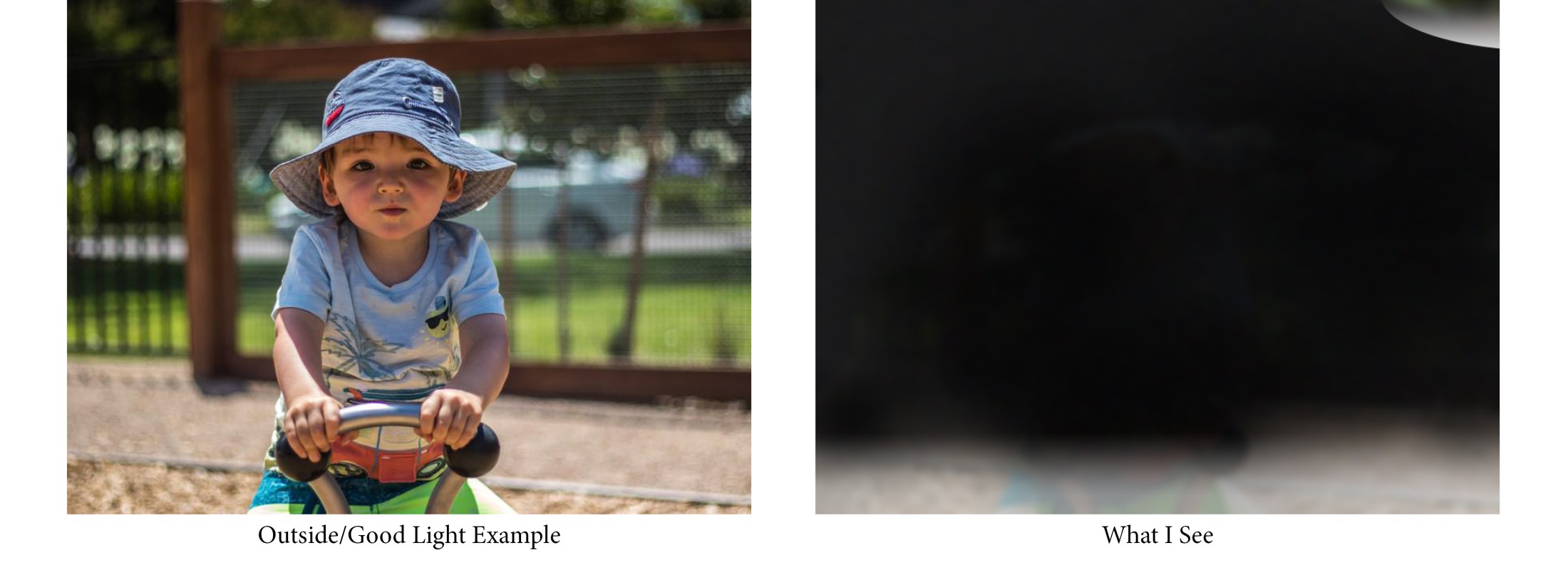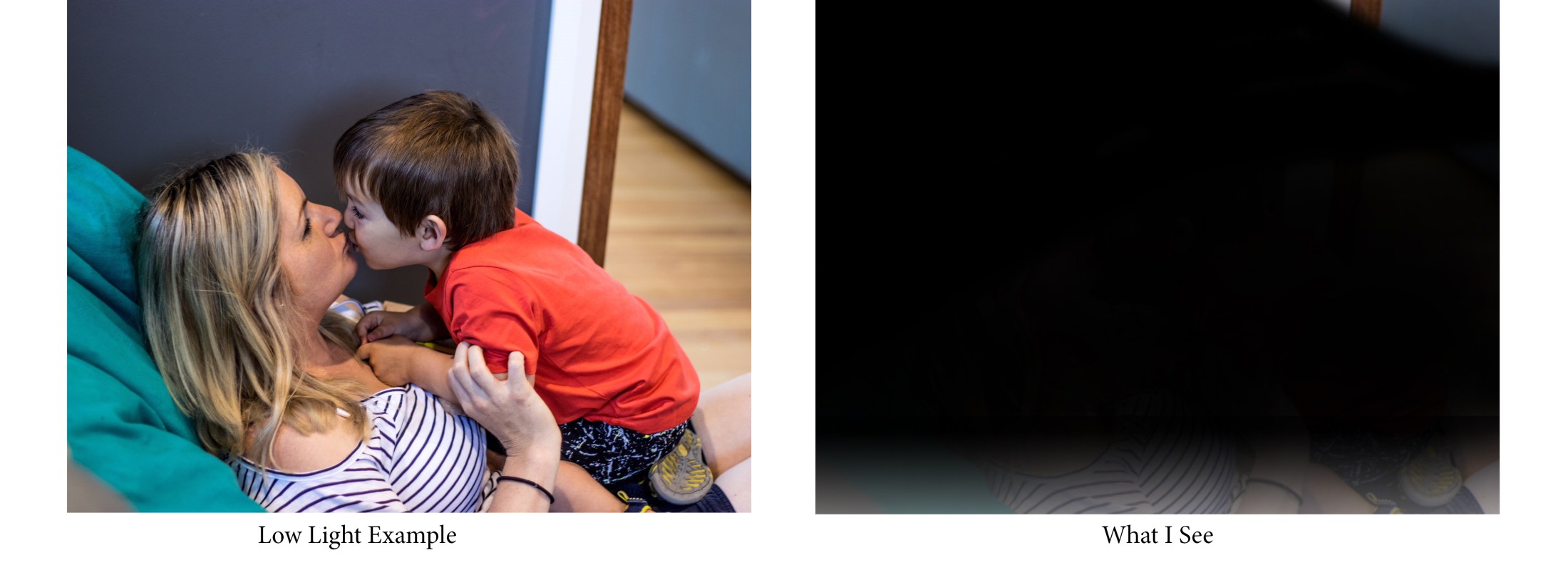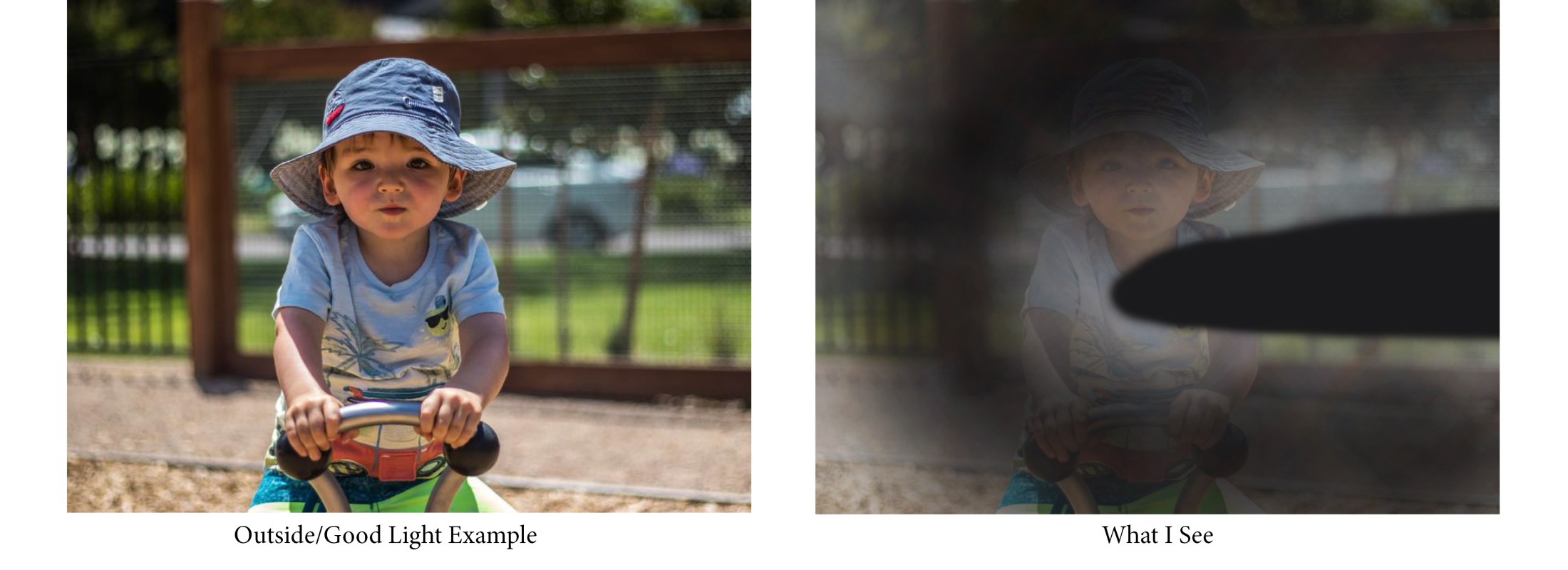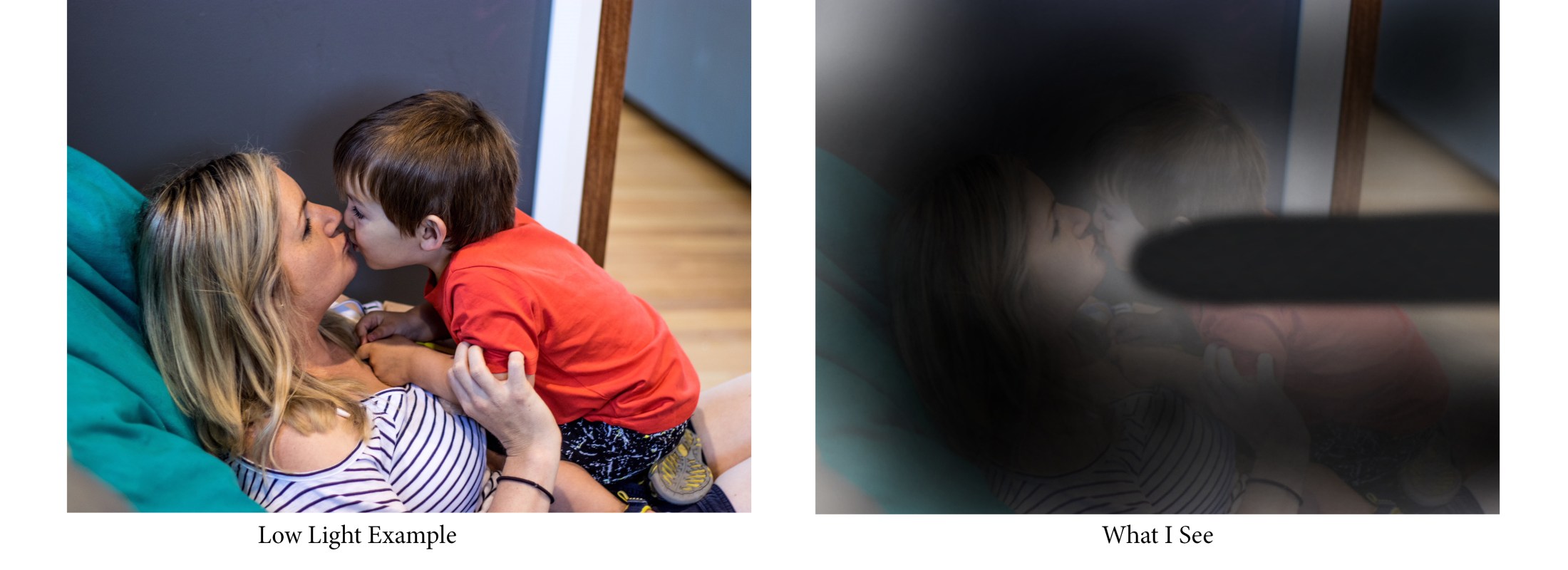By Sarah Hocking
This is my most asked question: How much can you see? Before I can answer this complex question, I need to explain the difference between the terms legally blind and low vision as there is lots of confusion when I am asked. Vision Australia defines the two terms as follows:
- Legally Blind A person is considered legally blind if they cannot see at six metres what someone with normal vision can see at 60 metres or if their field of vision is less than 20 degrees in diameter.
- Low Vision A person is said to have low vision when they have permanent vision loss that cannot be corrected with glasses and affects their daily functioning. Low vision can affect people of all ages and can have an impact on many aspects of a person’s life. It may cause problems with recognising faces, reading the newspaper, dialling the telephone or seeing road signs. Source: Vision Australia
So in answer to the question, I am diagnosed as legally blind. The medical term for my eye condition is called “Optic Atrophy.” In my case a benign tumour called a “meningioma” had carpeted through the optic nerve, damaging much of the blood supply along the way. The damage was irreversible and there is no cure. For more information about different eye conditions visit the Vision Australia link here.
There is no fixed visual on what a blind or low vision person can see. There are varying degrees of blindness and low vision which is quite complex. Different eye conditions create different experiences of what and how much a person can see. Not all blind people are totally blind and not all blind people see black. It is different for everyone which is often a common misconception. Yes, some people experience complete blackness, some experience varying degrees of a white foggy haze, some describe their vision like trying to look through a tunnel or a pin hole. There are many more descriptions. I guess what I am trying to say is that there is no stereotypical fixed measure.
My Vision
I will try and explain the best I can to give an idea of what I can and cannot see. My blindness is complex and confusing because what and how much I can see depends on the light available. I have been working with my orthoptist from Vision Australia to map out my vision and train my eye muscles to get a sweet spot to get the best Vision and focus.

I experience black spots or floaters. These areas are where the blood supply to my optic nerve have completely severed. Around these black spots I experience varying degrees of a white foggy haze and a smoky grey haze. I can see through these hazes. The white haze provides me with the best vision. I can make out objects, boundaries, people up close and colour. Through this white haze is functional. If I put my face up close to a “Spot the Dog book,” I can make out the text. The smokey haze is still see through but more dirty looking. Things appear darker and I struggle to make text out through this bit. It is like having a heap of mud splashed up on your sunglasses and smudged.
My left eye and right eye are different in degrees of vision.
I have asked my brother to do up some images in photos to describe what I can see. Bare in mind that these might not be completely accurate because he cannot see through my eyes, however I have done my best to draw it up for him and describe. I reckon he is pretty damn close. He has done up some images from outside in lots of sunlight where my vision is optimised and some images inside in low light.
Left Eye:
My left eye is the most damaged eye. I almost see complete blackness in low light. This eye is not functional. The black spot spreads in an arc over the top half of my eye and then gradually becomes see through in the bottom half. Where it becomes see through is like a thick dark charcoal fog. In good sunlight I may pick out shadows of shapes with concentration. Towards the bottom of my visual field is a white haze. This is where I try and focus if I am wanting to make out a shape from this eye, but it is tiring and difficult.


Right Eye:
The right eye is my functional eye. The best way to describe it is like a bulls eye. From the outer corner of my eye to the centre is a flat oval like black spot or floater. Surrounding the black spot is a ring of white see-through haze which is the most functional part of my eye. I can see everything through this part of the eye, but not detail and I struggle with contrast. The third ring is that dirty grey and not a lot other than light and shadow can be seen through it. The outer ring is the same as the second ring. Again the what and how much I can see depends on the degree of light. Here is an example of my right eye in daylight and low light. You can say my right eye is my vision because my left eye is pretty much dead. I use my right eye for everything.


Please note that this is my experience only and these images are not a representation of other individuals’ vision
These images may be confronting to a person who has full vision. When I woke up from surgery both eyes were much like the left eye. As the swelling came down, my vision improved in my right eye. After 3 to 4 months my vision became static once the swelling had settled. I feel very lucky that I have a little bit of vision. It could have been much worse if the tumour had of been left for longer. I feel like my brain has adjusted to the vision and fills in the blank spots. I feel that I cope reasonably well. It has taken lots of time to adjust, but I have accepted it.
I was born really longsighted and ever since I was a baby I had to wear glasses and contact lenses to correct my vision. In 2011 I had lens implants inserted and had near to 20/20 vision. If I didn’t have these lens implants in I would be really struggling to make out anything at all. It would be incredibly blurry. This is something we also have to monitor. My long sightedness and my optic atrophy are completely different eye conditions. One can be corrected and one can’t. My long sightedness is to do with the eyeball, where as the optic atrophy is brain related.
I hope this is informative and gives my readers a better understanding of my vision and helps give a clear understanding that blindness is complex and know one person has the same degree of blindness.
This post originally appeared on Sarah's blog Blind Intuition here. Visit her blog and read more of her writing here.










